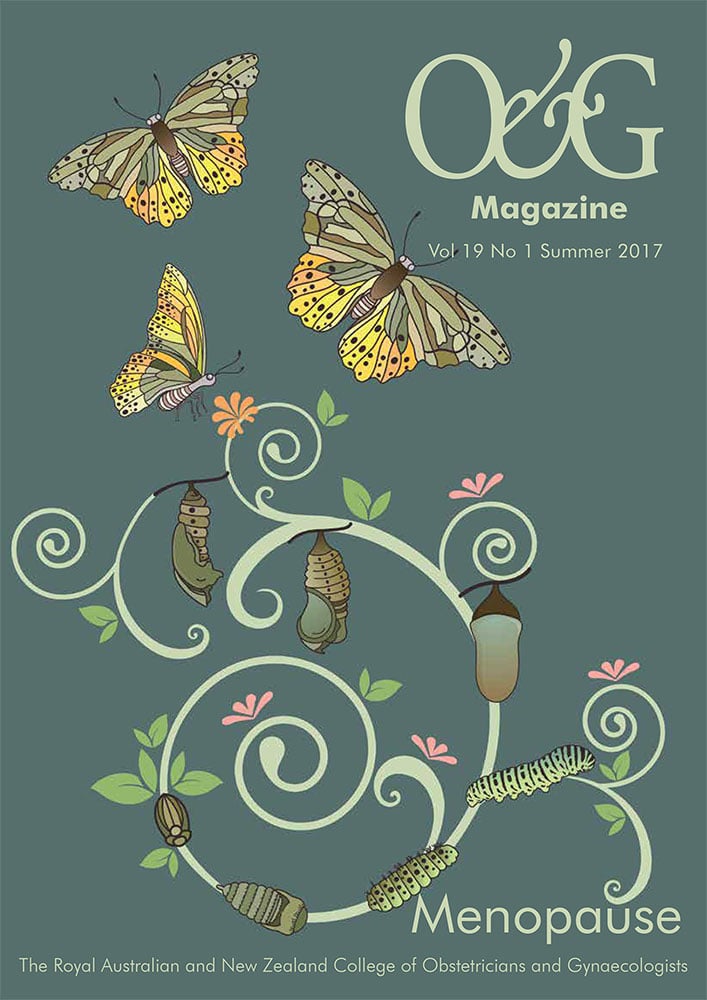A senior colleague once reflected to me that a large part of clinical gynaecological practice was a relatively recent phenomenon. Imagine practising in the 1800s, at a time when there was no hormonal contraception and the average female life expectancy was about 50. Women married at a younger age than today and would bear an average of six to eight children, breastfeeding each child until the next one was born two or three years later. Menstrual problems, a large part of everyday gynaecological practice, were soon superseded by the next pregnancy, while for many women menopause occurred very near the end of their lives. This is not the case today. An Australian woman born in 1881–90 would be expected to live until 51 years of age, while a woman born in 2007–09 is expected to live until she is 84. Similarly, a 45-year-old Australian woman in 1881–90 was expected to live another 26 years, while a 45-year-old woman in 2007–09 is expected to live another 40 years.1 The average age of menopause has, however, remained stable at around 50 years old.
The effect of an increasingly longer postmenopausal life leads to a number of social and biological considerations. In 2015, Sanderson and Scherbov published a demographic paper that was popularly reported with headlines such as ‘60 is the new 40’. In their paper, they proposed that old age should not be defined by an arbitrary number such as 60 or 65, but rather be defined by a predicted remaining life expectancy such as 10, 15 or 20 years.2 In conjunction with an increased life expectancy, it means that many women will live more years postmenopause before they and society consider themselves old. For example, this is seen in workforce figures in Australia, with a 2015 report by the Australian Institute of Health and Welfare (AIHW) projecting that the labour force participation rate of women aged 65–69 is expected to increase from 20 per cent to 35 per cent by 2060.3 Anecdotally, women expect to maintain an active work, social, and sexual life well past menopause and are planning to ensure that their health enables this.
Increased life expectancy will result in women living for many more years with a lower oestrogen physiology than previous generations. An Australian woman aged 65 in 2007–09 is expected to live until 87 years old, with the result being that a significant number of women will live more years postmenopause than in their reproductive years. Two areas of concern with women living for many years postmenopause include the effect of menopause on bone density and cognitive function.
Bone density is maintained by the balance between osteoblasts, which lay down bone, and osteoclasts, which remove bone. The reduction of oestrogen after menopause increases both osteoblast and osteoclast activity, but in an unbalanced fashion such that bone density decreases rapidly in the years postmenopause.4 Women are estimated to lose approximately 10 per cent of their bone density in the first five years of menopause.5
It is estimated that half of all women over the age of 60 years will experience at least one fracture due to osteoporosis.6 The consequences of osteoporosis include an increased risk of hip fractures. In 2006–07 there were 16 518 osteoporotic hip fractures among Australians aged 40 years or over (175 per 100 000 persons) with almost three-quarters of these occurring in women. Around one in nine people hospitalised with osteoporotic hip fracture in 2006–07 were discharged to residential aged-care service, where this had not previously been their place of residence, and less than 50 per cent of people regained their pre-fracture walking ability one year after their fracture.7 Fortunately, there are a number of effective treatments for postmenopausal bone density loss. Oestrogen hormone therapy, selective oestrogen receptor modulators (SERMs), antiresorptive medications, including bisphosphonates, vitamin D and calcium, as well as physical exercise can all prevent or treat osteoporosis.
An extended postmenopausal life expectancy provides a greater exposure to other maladies of advanced age. Of concern to many women is the possible effect of menopause and postmenopausal life on cognitive function. While there is considerable evidence linking oestrogen levels and cognitive function along with a link between earlier age of menopause and decreased cognitive performance later in life, other studies show no significant lasting cognitive changes attributable to menopause.8 In contrast to the prevention and treatment of osteoporosis, the prevention of cognitive decline is less certain. Initial observational studies of the effect of hormone treatment on cognitive function were promising, with some earlier studies reporting as much as a 50 per cent reduction in Alzheimer’s disease risk in women using hormone therapy. Later randomised controlled trials, such as the Women’s Health Initiative (WHI), WHI Memory Study (WHIMS) and WHI Study of Cognitive Aging (WHISCA); however, have shown increased dementia risk and poorer cognitive outcomes in older postmenopausal women randomised to hormone therapy versus placebo. It has been suggested that these results may be attributed to there being a ‘critical period’ early in menopause when the positive effect of oestrogen replacement on cognitive function is greatest.9
As professionals advising women on the management of menopause and later life, it is important that we are cognisant of the long-term health and social changes that are occurring with a longer life expectancy. In essence, women expect a high quality of life for many years postmenopause and their healthcare should be tailored to allow this. Future research, particularly into the long-term effects of hormone therapy and measures that may prevent cognitive decline, will become increasingly important in future decades.
References
- Australian Bureau of Statistics. 2011. Australian Social Trends, Mar 2011.www.abs.gov.au/AUSSTATS/[email protected]/Lookup/4102.0Main+Features10Mar+2011 [retrieved 17 January 2017].
- Sanderson WC, Scherbov S. Faster Increases in Human Life Expectancy Could Lead to Slower Population Aging. PLoS ONE. 2015;10(4) e0121922.doi:10.1371/journal.pone.0121922.
- Australian Institute of Health and Welfare. 2015. Growing older. www.aihw.gov.au/australiaswelfare/2015/growing-older/#t5 [retrieved 17 January 2017].
- Manolagos SC, O’Brien CA, Almeida M. The role of estrogen and androgen receptors in bone health and disease. Nat Rev Endocrinol. 2013;9(12):699-712.doi:10.1038/nrendo.2013.179.
- Better Health Channel Victoria. Menopause and osteoporosis. www.betterhealth.vic.gov.au/health/conditionsandtreatments/menopause-and-osteoporosis [retrieved 17 January 2017].
- Better Health Channel Victoria. Menopause and osteoporosis. www.betterhealth.vic.gov.au/health/conditionsandtreatments/menopause-and-osteoporosis [retrieved 17 January 2017].
- Australian Institute of Health and Welfare. 2010. The problem of osteoporotic hip fracture in Australia.www.aihw.gov.au/WorkArea/DownloadAsset.aspx?id=6442452945 [retrieved 17 January 2017].
- McCarrey AC, Resnick SM. Postmenopausal hormone therapy and cognition. Hormones and Behavior. 2015;74,167-172. doi.org/10.1016/j.yhbeh.2015.04.018.
- McCarrey AC, Resnick SM. Postmenopausal hormone therapy and cognition. Hormones and Behavior. 2015;74,167-172.doi.org/10.1016/j.yhbeh.2015.04.018.






Leave a Reply